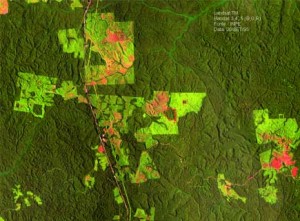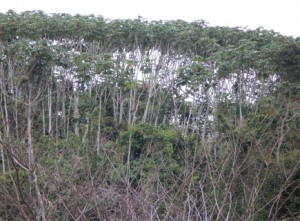Manaus, Brazil
P.I.: Bruce Williamson (LSU) and Rita Mesquita (INPA)

Early successional studies are one of two legs of the Biological Dynamics of Forest Fragments Project (BDFFP), a cooperative venture of the Smithsonian Institution and Brazil’s Instituto Nacional de Pesquisas da Amazônia (INPA), located 80 km north of Manaus (Amazonas State). In the early 1980s three farms were created by clear-cutting old-growth Amazon forests.
Different sites on the farms were converted to pastures, burned frequently, and subsequently abandoned. The current study plots, initiated in 1999, have been monitored annually, as part of a previously funded NASA Large Scale Biosphere-Atmosphere Project, terminated in 2005. The exact history of each plot was determined from written records and confirmed by GPS-referenced locations on Landsat images dating back to 1980. Plots were chosen to reflect time since abandonment (initially 2-17 yr) and by prior number of burns (0-7 fires). For agricultural land-use comparison, there are other study plots in abandoned plantations of rubber (Hevea sp.) and guaraná (Paullinia cupanea).
Native vegetation in the Central Amazon is dense, evergreen terra firme forest (Veloso et al. 1991). The regional climate is tropical humid with mean temperature of 26.7°C and mean annual rainfall of 2650 mm, 70% falling during the rainy season. Precipitation, even during the mild June–October dry season, remains above 100 mm/month, except in some El Niño droughts (Williamson et al. 2000). Soils are predominantly xanthic ferralsols (FAO/UNESCO system), derived from tertiary sediments, and extremely low in mineral nutrients (Fearnside & Leal-Filho 2001), and are characteristic of much of the central and eastern Amazon Basin (Sombroek 2000).








